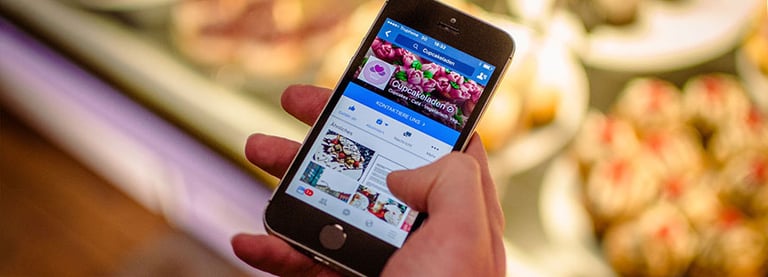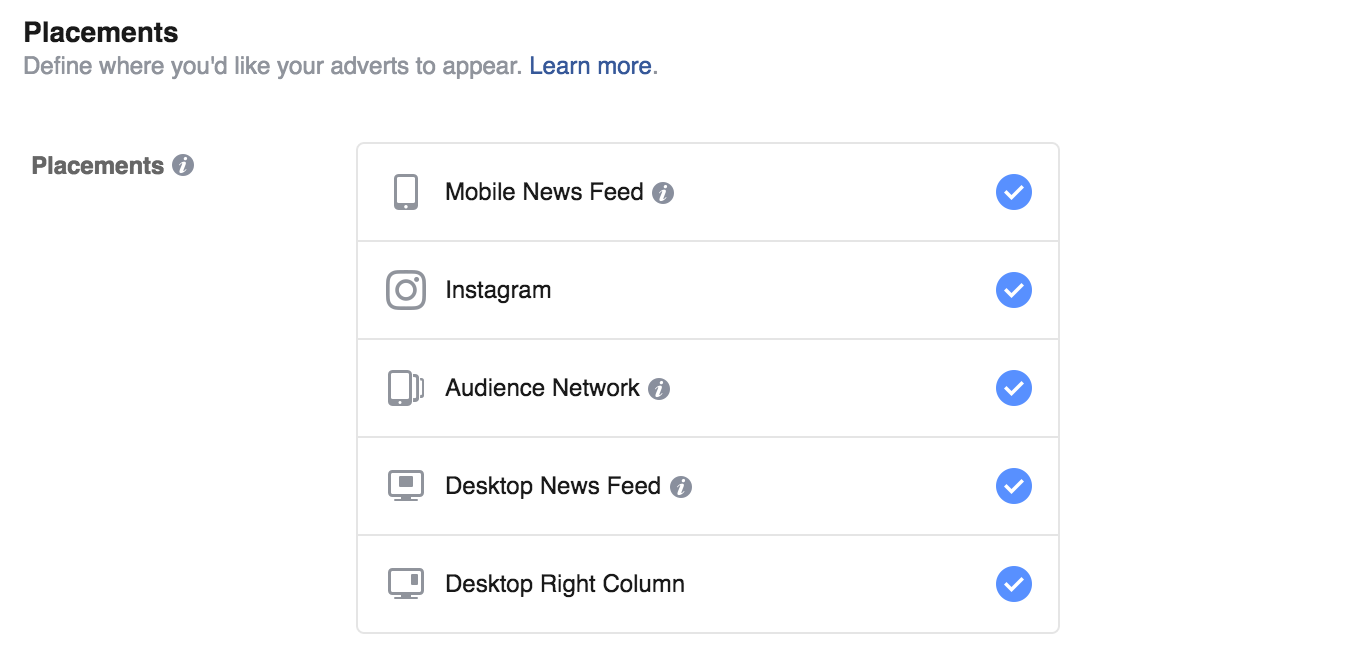Subscribe now and get the latest podcast releases delivered straight to your inbox.
7 Things I Wish I Knew Before I Started Facebook Advertising

Aug 4, 2016

Facebook advertising has changed dramatically since it first started.
The massive amounts of data that Facebook collects from its users on their site and across the web allowed them to transform a simple platform to gain likes and a bit of traffic into a robust and complex advertising behemoth that rivals search monster, Google AdWords.
But who cares about the history of Facebook.
If you're around my age, you started using the platform as a teen, and it’s just been a part of your life since then. If you’re older than I am, you probably understood more of the long-term ramifications before I did, and if you’re much older than I am, you’re probably saying ‘What’s this Facebook thing?’
But you’re really here to find out what you can do to spend less on your Facebook advertising.
Here’s a handful of tips I’d give to someone new to Facebook advertising, before they even touched the portal. They are grouped by categories: goals, audiences, and reach, images, in order to answer these questions: why, who, how, and what.
Goals
1. Having the Wrong Expectations
Having the wrong expectations can be deadly. You spend a thousand dollars on advertising, you expect, say, ten leads. What happens if you only get five? What happens if you don’t get any?
I’ve talked about this before - always start with why. Why should anyone care about your brand, what it has to say, and whatever you’re selling? If you can’t answer those questions, go back to the basics, you might not be ready for this.
Your Facebook advertising has to target the right stage of the funnel to be effective.
If you’re aiming for sales, are you marketing to an audience that’s ready to buy?
If they’re not ready to buy yet, consider a different audience, possibly one that is interested in a solution to one of their problems that you’ve already identified.
Audiences
If you do have an audience that is ready to buy, great! Make sure you’re targeting only that audience with ads focused around sales.
This is where the real power of Facebook comes in. They have so much data about you, what you like, what you do on the web, and the power of graph search only magnifies marketers’ ability to create unique audiences and truly reach their buyer personas.
There’s a couple key points:
2. Retargeting
In the same way that Google AdWords allows remarketing to unique individuals that have visited your site, Facebook allows you to target users who have visited yours.
Add the pixel to your site, and it’ll start gathering data for you. This is a great way to target the middle of the funnel. This audience knows about you, but they probably have not converted or bought from you.
Example: While marketing your smartphone app, you set up a retargeting campaign to all website visitors, pushing an offer that addresses smartphone productivity. It’s targeting the right audience, so it performs well, and sets you up for further successes with Custom Audiences.
Use this as an opportunity to build lookalike audiences as well.
3. Lookalike Audiences
Lookalike audiences are just that - they look like another audience that you have. You can create one from any Custom Audience, which is incredibly powerful.
Facebook will find users with similar likes, similar activity, and other similarities, and you can market directly to users who are like the users in a list that you already have, but aren’t, growing giving you an auto-targeted list.
Keep in mind it’s only as effective as your original list - the more specific, the better.

Example: You’ve uploaded a list of users of your smartphone app. You can create a lookalike audience to market to new users, and target them on mobile news feeds and Instagram. Boom! Users.
4. Too broad or too narrow of an audience
This happens all the time. You create an audience that encompasses your target audience. “Great, these people all need what I have,” you say, rubbing your hands together enthusiastically. You set your ads live, and sit back and wait for the results to flood in. Except they never do.
The problem is, your audience never needed what you had. The subset of users in your audience might have, but they were buried in an audience too broad
Example: While marketing your smartphone app, you target an audience of adults from age 18-34 in the United States. Your conversion rate is low, and you don’t get the volume of app installs that you were expecting because this criteria is far too broad.
If your audience is too narrow, the opposite will happen.
Example: While marketing your smartphone app, you target an audience of adults from age 18-34 in the New York, who speak English, have a college education, are interested in Management, and are friends of users using your app. This audience is likely too narrow - you’ll quickly saturate them with ads and your results will spike quickly, then decrease.
Reach
There’s a lot you want to avoid in terms of reach. If you’ve got a solid audience, but aren’t reaching them the right way, the best ads in the world will never convert. Here’s what I’ve learned:
5. Saturating your audience
No matter the size of your audience, they are very likely to see your ad a few times during your campaign - it’s unavoidable.
The trick is making sure that you’re not flooding their news feed with your ads. Monitor your campaigns and try to even them out over time. You don’t want all your results at the beginning, because then you’ll be disappointed for the rest of the campaign.
Example: While marketing your smartphone app, you set up a new campaign with a high budget, with the goal of getting a lot of conversions quickly. You do, but they drop off after the first couple days as the number of impressions rises.
6. Placements
With the purchase of Instagram, and a few tweaks to the Facebook layout, placements (where you ad is located) have changed the way marketers operate. Every placement is going to have different engagement, different goals, and optimal usage.

Look at your Google Analytics, and answer these questions:
- On what device are most of your visitors browsing your site?
- On what device do most of your visitors land on your site?
- On what device do most of your visitors convert on your site?
The answers to these will tell you the best placement for your Facebook ads.
Example: While marketing your smartphone app, you leave the default placements on. You’ve created a fantastic ad, are targeting the right audience with a problem to their solution, but the campaign doesn’t do well. You check the placements, and realize that placing ads on desktop will not get you app installs on smartphones. You kick yourself.
7. Not changing your ad design or copy
Ever see the same commercial on TV for a couple weeks in a row?
You likely groan and change the channel. Facebook ads are the same way - your audience will get banner blindness quickly once they’ve seen the same combination of text and images for a few times. Don’t let them reach that point!
Example: You set up a campaign and ad group with one variation. Your impressions are high, but clicks decrease over time, and eventually stop. You’ve saturated your audience with the same ad, over and over, and once again, kick yourself.
Visuals on Facebook are entirely a different beast, biy we’ll talk about them next time. Check out these B2B Facebook Ad examples from Bob, in the meantime.
Remember, likes aren’t leads. If you’re using Facebook for business-to-business, you may not see the same results that business-to-consumer advertisers will see.
Also remember, you need to test and iterate. Facebook ads are the same as many things in the marketing bucket, they’ll grow stale over time. Your audience will change as well, so be sure to change with them.
Photo Courtesy: Facebook
Free Assessment: